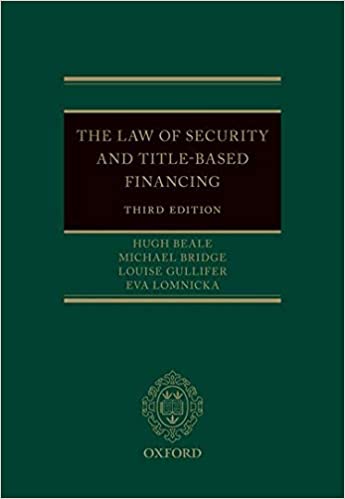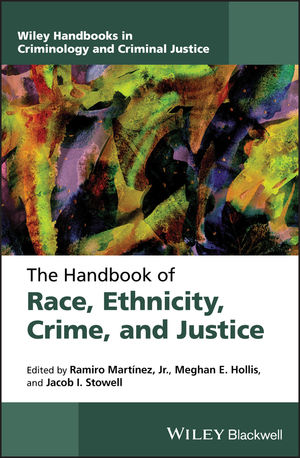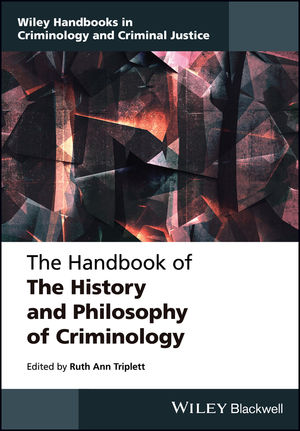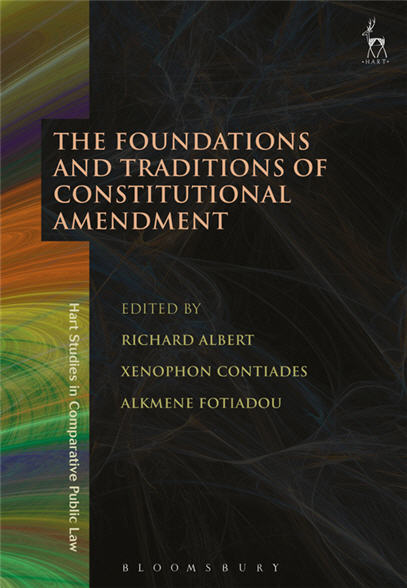Forensic Science Education and Training: A Tool-kit for Lecturers and Practitioner Trainers, ISBN-13: 978-1118689233
[PDF eBook eTextbook]
344 pages
Publisher: Wiley; 1 edition (June 12, 2017)
Language: English
ISBN-10: 1118689232
ISBN-13: 978-1118689233
Description
A comprehensive and innovative guide to teaching, learning and assessment in forensic science education and practitioner training
– Includes student exercises for mock crime scene and disaster scenarios
– Addresses innovative teaching methods including apps and e-gaming
– Discusses existing and proposed teaching methods
Review
“Overall this book is successful in its aims; it is relevant and places emphasis on the importance of quality and standards within forensic science education”…..”This book would be of benefit to forensic educators and trainers providing some beneficial opportunities to enhance teaching material and develop curriculums” Ruth Buckley MCSFS on behalf of The Chartered Society of Forensic Sciences
From the Back Cover
Forensic science poses unique challenges to educators and students, as it has a strong theoretical base, but is also highly practical and vocational. From preparing a crime scene house to setting test questions, this volume offers a comprehensive guide to delivering aspects of high quality forensic science education through a variety of means. It evaluates current methods of teaching, learning and assessment practice in forensic science, at all levels of tertiary and higher education, including universities, continuing education and professional training establishments.
Bringing together contributions from leading forensic experts, this volume discusses:
– Pedagogical uses for new technology including apps and e-gaming
– Creating practical classes on a budget
– Creating high-reality mock disaster scenes
– Virtual anatomy tools
– Translating forensic business methods internationally
Forensic Science Education and Training: A Tool-kit for Lecturers and Practitioner Trainers provides a unique set of resources, experience and practical advice for teachers, teaching assistants, lecturers and trainers in many areas of forensic science. It will also appeal to professional scientists, forensic science students, researchers in forensic science or professional trainers and training course providers, within police forces and law enforcement agencies.
About the Author
Anna Williams School of Applied Sciences, University of Huddersfield, UK
John Paul Cassella Department of Forensic Science and Crime Science, Staffordshire University, UK
Peter D. Maskell School of Science, Engineering and Technology, Abertay University, UK
Table of contents
List of Contributors xiii
Foreword xv
Dave Barclay
Acknowledgements xix
1 Forensic Science Education – The Past and the Present In and Out of the Classroom 1
John P. Cassella, Peter D. Maskell, and Anna Williams
Introduction 1
Conclusions and Implications for Teaching and Practice 16
References 16
Further Resources 18
2 Forensic Anthropology Teaching Practice 19
Anna Williams
Introduction 19
Practical Teaching Methods 20
Use Of Human Skeletal Material For Teaching Purposes 24
Alternatives to Human Skeletal Material 27
Teaching Forensic Anthropology Theory 29
Forensic Cases as Training 29
Assessment Methods 30
Post-Mortem Examinations 32
Conclusions 35
References 36
Further Resources 38
3 Considerations in Using a Crime Scene House Facility for Teaching and Learning 39
David Rogers
References 44
4 Taphonomy Facilities as Teaching Aids 45
Peter Cross and Anna Williams
Introduction 45
History of Taphonomic Research in Forensic Science 45
Taphonomy Research Facilities 47
Teaching Forensic Taphonomy 48
Establishment of a Taphonomy Facility for Teaching and Research 50
The Future of Taphonomy Facilities 52
Conclusions 52
References 52
5 Forensic Fire Investigation 57
Richard D. Price
Introduction 57
Fire and Explosion Investigation Module 58
Fire Scene Simulation 60
Conclusions 69
Future Developments 69
Recommended Resources 70
References 70
Further Reading 71
6 Digital Forensics Education 73
Christopher Hargreaves
Introduction 73
Challenges in Digital Forensics Education 76
Other Discussions in Digital Forensics Education 82
Summary 84
References 85
7 A Strategy for Teaching Forensic Investigation with Limited Resources 87
Janice Kennedy
Introduction 87
Historical Background 87
Methodology 90
Results 94
Analysis 96
Conclusions 97
Acknowledgements 97
Appendix 7.A: Budget Information for Forensic Investigation Scenario 98
Appendix 7.B: Information on Testing Available for Forensic Investigation
Scenario 99
Appendix 7.C: Suggested Schedule for Delivery of This Style of Module 100
References 101
8 Improving the PhD Through Provision of Skills Training for Postgraduate Researchers 103
Benjamin J. Jones
Introduction 103
Study of Student Perception of Training Needs 105
Training Course Attendance and Usefulness 106
Training Course Delivery 109
Conclusions 113
References 115
9 Educational Forensic E-gaming as Effective Learning Environments for Higher Education Students 119
Jamie K. Pringle, Luke Bracegirdle, and Jackie A. Potter
Introduction 119
Background 120
Methodology 122
Results 126
Discussion 131
Conclusions 133
Acknowledgements 133
Glossary 133
References 134
Further Resources 136
10 Virtual Anatomy Teaching Aids 137
Kris Thomson and Anna Williams
Introduction 137
Virtual Anatomy in Healthcare Education 137
Forensic and Virtual Autopsy Imaging 140
Advanced Clinical and Procedural Training 141
Conclusions 143
References 145
11 Online Teaching Aids 147
Anna-Maria Muller, Luke Taylor, and Anna Williams
Introduction 147
Employability and Transferrable Skills 148
Online Learning Management Systems 150
Note-taking Apps – The Age of Evernote and OneNote 151
Scientific Demonstration Apps 151
Within the Forensic Curriculum 152
Practical Guidance for Using Online Tools 153
Social Networks and Forums 155
Deciding Which Technology to Use 156
Conclusions 159
References 159
12 Simulation, Immersive Gameplay and Virtual Realities in Forensic Science Education 163
Karl Harrison and Colleen Morgan
Introduction 163
Terms of Reference 164
Serious Games 165
Simulation-based Real Environment Learning in Professional Forensic Training 166
Hydra Augmented Reality 167
Virtual Reality 168
Crime Science Investigators (CSIs) 172
Augmented Reality 172
Augmented Virtuality 172
Virtual Reality 173
Conclusions 174
References 175
13 Training Forensic Practitioners in DNA Profiling 177
Sue Carney
Introduction 177
Prior Knowledge 177
Setting the Scene: Expectations 178
Preconceptions and Common Misconceptions 178
Introductory Concepts 179
Intermediate Concepts 182
Advanced Concepts 186
Specialist Techniques 189
In The Court of Appeal 191
Teaching Principles 195
Appendix 13.A: Low Level Profile Examples 197
References 201
14 The Forensic Investigation of Sexual Offences: Practitioner Course Design and Delivery 207
Sue Carney
Introduction 207
Starting Points 207
Evidence Types 208
The Body as a Crime Scene: Information from the Forensic Medical Examination 209
Setting the Strategy 212
Interpretation of Findings 214
Writing the Statement 216
Training to Other Audiences 219
Conclusions 220
Appendix 14.A: Sexual Offence Case Training Scenarios 221
Appendix 14.B: Templates for Use in Statement Writing Exercises 226
References 232
15 The Use of High-Fidelity Simulations in Emergency Management Training 235
Graham Braithwaite
The Need for High Fidelity 235
Scenario Design 236
Health and Safety Considerations 237
Initial Response 241
Site Management 242
Evidence Collection 244
Media Management 246
Team Management 247
Witnesses and Interviewing 248
Coaching Techniques 250
Analysis and Reporting 251
Summary 252
Reference 252
16 Police Training in the Twenty-first Century 253
Mark Roycroft
Introduction 253
Training of Future Police Detectives 255
Evaluation of Police Performance 257
Avoiding Miscarriages of Justice 257
Maintaining and Developing the Role of the Senior Investigating Officer (SIO) 258
Expert Witnesses 260
The Compartmentalisation of Investigative Skills 260
Forensic Provision 261
Silverman Report on the Closure of the Forensic Science Service 261
Ethical Issues 262
High Volume Crime 262
New Investigative Challenges 263
Recommendations 265
Conclusions 266
Glossary 266
References 266
17 The Design and Implementation of Multiple Choice Questions (MCQs) in Forensic Science Assessment 269
Claire Gwinnett
Introduction to Multiple Choice Questions (MCQs) 269
The Benefits and Limitations of MCQ Use in Forensic Science Assessment 270
Designing MCQs for Forensic Science 275
Integrating MCQs into Forensic Science Education and Assessment 289
Marking Methods for MCQ Assessments 294
Conclusions 297
References 297
18 The Future of Forensic Science Education 301
John P. Cassella, Anna Williams, and Peter D.Maskell
Introduction 301
The Teaching Exercise Framework and the Research Exercise Framework 303
Accreditation of Forensic Science Providers 305
Accreditation of Academic Forensic Courses 305
Accreditation of Forensic Science Practitioners 306
Employers in the Next Decade 307
The Future of Forensic Science Education and Practitioner Training 308
Conclusions 309
References 309
Further Reading 310
Index 311
What makes us different?
• Instant Download
• Always Competitive Pricing
• 100% Privacy
• FREE Sample Available
• 24-7 LIVE Customer Support




Amelia Parker (verified owner) –
Highly satisfied with the quick service.